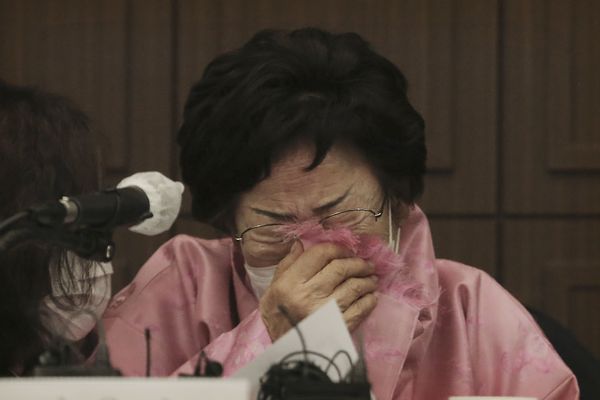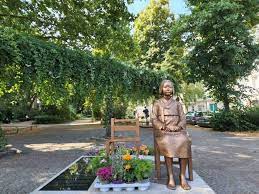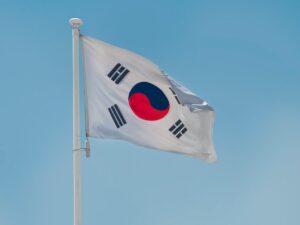
In any society, the sex work of prostitutes is hard work and very damaging to their social reputation. That is why these women earn high incomes. The same was true for prostitutes working in Japanese brothels before the Asian-Pacific War and for Japanese military comfort women during the war.
This situation is also evident in the contracts they signed with brothel and comfort station operators. Professor Ramseyer’s article makes this clear. He explains the structure of the contract between the business owner and the prostitute or comfort woman, grasping the contract as an indentured servitude.
According to the paper, the contract consists of (1) an advance payment given to prostitutes and military comfort women before they start working, (2) a contract period (indenture) that defines the number of years the women will work, and (3) the percentage of sales divided between the contractor and the prostitutes/comfort women. For more information on this, please refer to my article, “South Korea Frowns at U.S. Thesis Denying Sexual Slavery Theory.
However, this is not the first time that Professor Ramseyer has described this characteristic, and it is well known among researchers. The point of this paper is that the treatment of wartime military comfort women was better than that of prewar prostitutes. This is because the places where they worked were battlefields.
Unlike in Japan and Korea, military comfort women who accompanied their comrades overseas, whether in the front or in the rear, were always at risk of death. Also, if the employer violated the contract, there were few options available. If they were in Tokyo or Gyeongseong (now Seoul), they could turn to acquaintances, the police, or the courts. If that is not possible, they can flee into the masses, but this is not possible when the battlefield is overseas.
Compensation for high risk was high income. This is reminiscent of the labor mobilization (including conscription) that took place from September 1939: in the 1920s and 1930s, the wages of Koreans working in Japan were a little more than half those of the Japanese.
After the wartime mobilization, however, wage discrimination on non-economic grounds, such as ethnic discrimination, almost disappeared, although there were differences based on work ability. This is because the Japanese government and businesses eliminated discrimination due to labor shortages. Ironically, the outbreak of war improved the treatment of Korean workers.
How many times higher was the advance for prostitutes than the daily wage of female workers?
According to Professor Ramseyer, in the mid-1920s, the advance for prostitutes in Japanese brothels was as high as 1,000 to 1,200 yen. This was at a time when the daily wage for female workers was less than ¥1.50. Moreover, unlike female laborers, prostitutes were live-in workers.
Providing food and shelter at a time of low economic development and high Engel’s coefficient further widens the wage gap between prostitutes and other occupations. Taking these factors into account, the advance for prostitutes exceeded the daily wage of female workers by a factor of 1,000.
Even during the war years, the amount of advances did not change significantly. Instead, the length of the contract (the term of the year) became shorter. In the case of prostitutes working in brothels, the usual term was six years in Japan and three years in Korea, but the term for comfort stations was two years. In some cases, such as the Japanese military comfort station in Burma, contracts ranged from six months to one year.
Like prostitutes, military comfort women could leave the comfort station at the end of their contract period, regardless of whether or not they had repaid their advance in full. Thus, the shortened contract period made it easier for comfort women to return home.
The general public thinks of comfort women as finally being able to return home at the end of the war, but this is due to the influence of the “forced marriage” and “sex slave” theories. The opening of comfort stations began in earnest at least in 1937 and continued for eight years until 1945, so there must have been many military comfort women who returned before the end of the war. Rather fewer would have ended the war at the comfort station.
In some cases, a ratio of 4:6 was adopted. As a result, many of the military comfort women returned home after repaying their advances in a few months. This is also stated by Ikuhiko Hata, a former professor at the University of Tokyo (“Comfort Women and Battlefield Sex”). It should be added here that the number of servicemen whom the Japanese military comfort women dealt with was far greater than the number of civilian customers taken by the prostitutes, which greatly increased their income.
In 1925, the average number of customers a prostitute dealt with in a Tokyo brothel was only 2.5 per day. Meanwhile, there was always a shortage of comfort women on the battlefield. The Japanese military required comfort stations to maintain thorough hygiene and other measures to prevent venereal diseases, forbade civilians from entering, and prohibited soldiers from using stores other than comfort stations.
Incidentally, there are claims that comfort women who returned home after the war failed to recover their share from the military, but this is rather an exceptional case, considering that far more comfort women returned home before the war ended.
Professor Ramseyer concluded that “military comfort women were higher risk and higher income than prostitutes. I agree with this. In response, the Korean media has devoted itself to personal attacks on the messenger (speaker), Professor Ramseyer.
They conveyed the views of some Korean and Japanese history researchers in the U.S. and expressed criticism of the paper. The first of these was that Professor Ramseyer “claimed that the responsibility of the Korean recruiters was greater than that of the Japanese state. The pertinent part of the paper is as follows
The Reality of “Disneyland” during the Vietnam War
It was not that the government – either the Korean or the Japanese government – forced women into prostitution. It was not even that recruiters focused on the army’s comfort stations. Instead, the problem involved domestic Korean recruiters who have been tricking young women into working at brothels for decades.
It was not even that recruiters focused on the army’s comfort stations. Instead, the problem involved domestic Korean recruiters who have been tricking young women into working at brothels for decades. Nor did recruiters focus on military comfort stations. The issue is related to the Korean recruiters who have been deceiving young women into working in brothels for decades.
The direct responsibility, of course, lies with the Korean recruiters. The Japanese military was wary of recruiting comfort women through employment scams and human trafficking, as it would destroy the prestige of the military, and the Governor-General’s Office cracked down on such recruiters. However, the Japanese government and military were involved in the establishment and operation of comfort stations. Was this Japan’s fault? Yes. All human beings make mistakes. At times like this, historical comparisons are instructive.
The United States, with its tradition of Puritanism, is famous for its two-sided attitude toward “sex in the battlefield”: in 1941, it established the principle that “any contact between soldiers and prostitutes is forbidden under any circumstances. However, when venereal diseases became a problem among soldiers who went to brothels in violation of this principle, the Surgeon General sent 150,000 boxes of condoms and 310,000 boxes of disinfectants to the front by air and sea in the fall of 1942.
In the Vietnam War, the largest war since World War II, the U.S. took an even more pragmatic attitude. There were two “recreation centers” at the U.S. military base of Lychee, where 60 Vietnamese women slept in their own rooms. Proceeds were split 6:4 between the business owners and the women, a military doctor examined the women weekly, and tags were placed in the safe women’s rooms.
The brigade commander oversaw this place called “Disneyland,” and the Pentagon gave its tacit approval. It was a scene I had seen somewhere before. It was a Japanese military comfort station. During World War II, Germany also had a comfort station similar to the Japanese military comfort station. In 1942, there were as many as 500 such places.
The second criticism of the paper is that “there was no contract between the Korean military comfort women and the comfort station operators. To the claim that “there was no contract because they were forced to go,” the author points out that there is no evidence of “forced labor,” and to the claim that “girls in their early teens would not know about the contract,” the author only points out the fact that “comfort women were usually in their 20s, and the average was in their mid-20s. Let’s focus on issues that are more consistent with historical facts.
Did the parents of the comfort women know what the job entailed?
There were times when Korean agents would take women and sell them off, claiming they would introduce them to good jobs (employment fraud). In this case, the women were taken to a comfort station without knowing that they would be working as comfort women. In this case, there would have been no need to sign a contract and a large advance would not have been paid. However, there are dangers in this. First, kidnapping, including employment fraud, has been the subject of police control in Korea since before the war.
Second, it could become a problem even after the women arrived there. The troops managing the comfort stations made sure that the would-be comfort women knew what kind of work they would be doing. Thus, there should have been fewer cases of kidnapping and taking comfort women than of de facto trafficking by their parents.
In the latter case, the money paid by the recruiter to the parents on behalf of the comfort station operator is the price for selling their daughters for the parents, but it is an advance for the recruiter and the comfort station operator. According to “Anti-Japanese Tribalism” by former Seoul National University professor Yi Yeong Kaul, this kind of transaction between recruiters and parents was on the borderline between the illegality of human trafficking and the legality of legitimate exercise of rights and job placement under the family registration system. Human trafficking was already rampant before the war and sometimes became a social problem, but the majority of those investigated for such charges were acquitted.
Given the circumstances of the time, parents dealing with recruiters should be seen as knowing where their daughters would go and what they would do. Even if it was not an explicit agreement to receive an advance, if the parents knew about it, this is nothing less than the contract that Professor Ramseyer describes.
Critics in the U.S. are unaware of these facts. It is understandable in this context that former comfort woman Moon Ok-ju, whom Professor Ramseyer refers to in his article as “someone who made a lot of money as a comfort woman,” said that she “hated her parents who sold her more than the contractors.
A typical case of a proper contract with a trader would be a woman who has been in the prostitution business in Korea and the outside world since before the war. This is a detail that Korean and Japanese researchers have neglected, but it is the most probable.
There were as many as 10,000 prostitutes on the Korean Peninsula around 1940, according to the information available from the Governor-General’s Office. In addition, the number of Korean prostitutes in China, Manchuria, and other areas where Koreans were expanding, which roughly coincided with the battlefields of the Asia-Pacific War, reached 8,000. These are only the figures ascertained by government agencies. What would be necessary in transferring prostitutes to become military comfort women would be to inform them of the “high risk and high income” when compared to current employment.
What is a woman taken to a comfort station by a recruiter?
From the recruiter’s perspective, if they are prostitutes, there is no risk associated with kidnapping or trafficking. From the standpoint of the prostitute, her social reputation would not be further damaged because she would be a comfort woman, and in fact, she could often take pride in comforting the soldiers. The upper echelons of the Japanese military and the soldiers were not in a position to pursue the issue of the comfort women themselves, and in fact, they never did. In light of the above, it is likely that the first targets of the pushers were the prostitutes in and out of Korea.
Song Geon-ho, who founded and served as president of the Hankyoreh Newspaper, one of the most left-wing and anti-Japanese newspapers in Korea, wrote the following in his book “Modern Korean History under Japanese Imperial Rule,” published in 1984, before the comfort women issue was politicized. He was born in 1927 and experienced the colonial period.
After the invasion of Nanking at the end of 1937 and around the time of the Xuzhou Operation, the Japanese authorities instructed the Korean official pedants to take many impoverished Korean women living in prostitution to mainland China, where they were placed in Japanese military facilities with names such as “comfort stations,” “simple comfort stations,” and “army amusement centers,” and used as comfort food for Japanese soldiers. and made them into comfort items for the Japanese soldiers.
Here is another example. Park Chi-won’s (pseudonym) mistress’s brother (brother-in-law) ran a Japanese military comfort station in Rangoon, the capital of Burma. Park worked at the bookkeeping desk, where he was in charge of guiding guests and accounting, and left a diary of his life in “Diary of a Comfort Station Manager” (Isp Publishing Co., Ltd.).
Park’s mistress ran an inn in Daegu, South Korea. At that time, the inn business often doubled as a prostitution business. Therefore, when Mr. Park and his brother-in-law wanted to recruit comfort women, they would first negotiate with prostitutes who were acquainted with the mistress, rather than going to rural villages to seduce women or find heartless parents to buy their daughters.
As I mentioned in my previous article, former comfort women initially told how they became comfort women, saying that they were “followed” or “trafficked. There is no testimony that they were originally engaged in the prostitution business. If those who were involved in prostitution were to reveal this, it would result in “social death” in Korea. It is for a similar reason that no one in Japan reveals under their own name that they were military comfort women.
After all, military comfort women should be seen as having entered into a financial contract with a firm, either by themselves or by their parents on their behalf. Professor Ramseyer’s paper is a perfect starting point for such a discussion.
It is an excellent opportunity for Korean academics to break away from the old ways of anti-Japanese nationalism and personal attacks on the comfort women issue and to begin an academic debate on the subject. I hope that Korean scholars on the comfort women issue will answer these questions.











